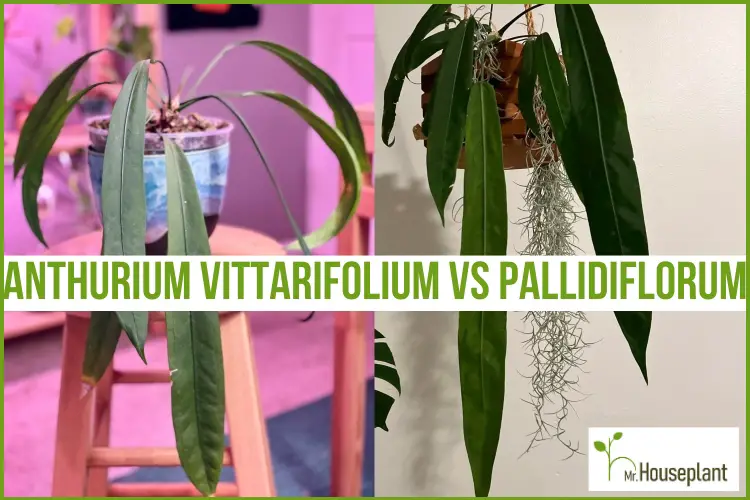
Anthurium Vittarifolium Vs Pallidiflorum – how to tell the difference? Maybe you want to buy a Vittarifolium or a Pallidiflorum, but you’re not sure how to tell them apart. Perhaps you already have one of these tropical rainforest beauties but you’re unsure which one? In this post you will learn 4 easy ways to differentiate Anthurium Vittarifolium from a Pallidiflorum.
Here is how to differentiate Anthurium Vittarifolium and Anthurium Pallidiflorum: leaf base is pointy on Vittarifolium and rounded on Pallidiflorum; Pallidiflorum has a deeper green color than Vittarifolium; Pallidiflorum has velvety leaves, unlike Vittarifolium; Pallidiflorum has a more defined light green to white midrib, Vittarifolium has a less prominent midrib.
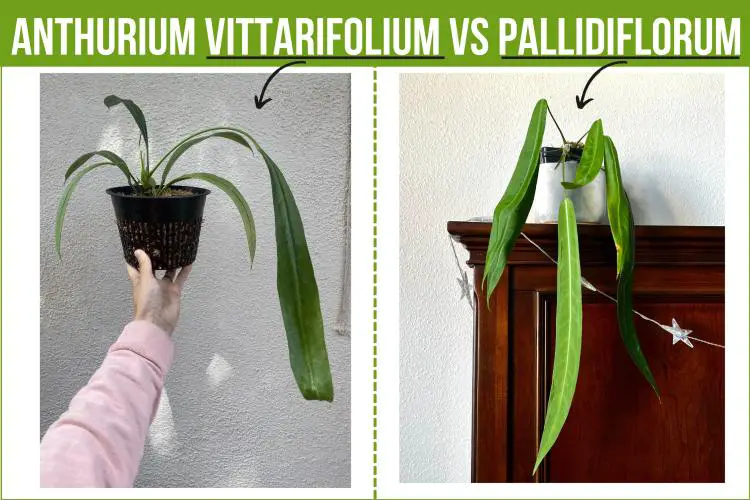
Anthurium Vittarifolium on the left and Anthurium Pallidiflorum on the right (Photo on the right by: problematicpasnetti)
Difference 1: Leaf Shape
The main difference between Anthurium Vittarifolium and Anthurium Pallidiflorum is the shape of the leaf base, the part of the leaf that is attached to the petiole. The base of the leaf is pointy on Anthurium Vittarifolium and rounded on Anthurium Pallidiflorum. This is the easiest, most straightforward, and usually sufficient way to determine which plant you have.
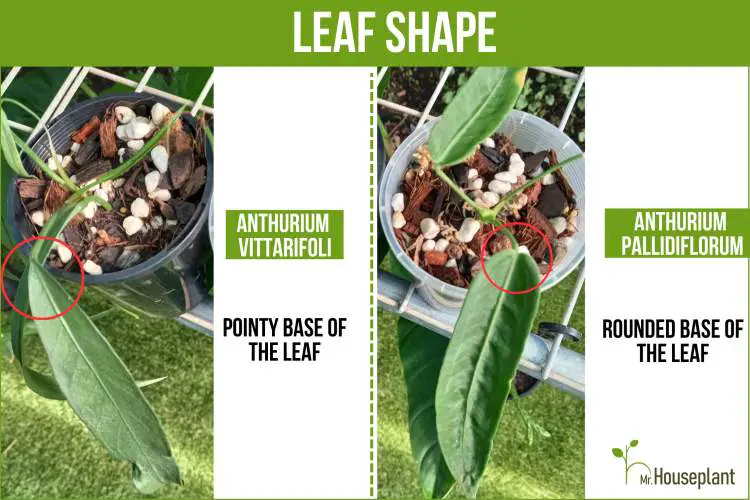
Anthurium Vittarifolium on the left with a pointy leaf base, and Pallidiflorum on the right with a rounded leaf base, grown in a chunky soil mix with orchid bark (Photographer: Cory Duffy)
Difference 2: Leaf Midrib
Leaf midrib is another good way to differentiate Vittarifolium and Pallidiflorum, especially with older plants. Anthurium Pallidiflorum has a more defined midrib, that is light green to white and is prominent against its dark leaves. Anthurium Vittarifolium has a less prominent midrib, as seen in the image below.
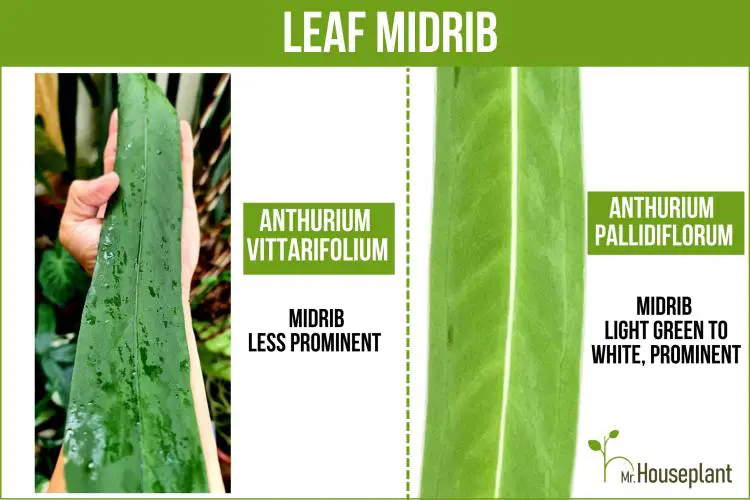
Midrib on Anthurium Vittarifolium is less noticeable than on Anthurium Pallidiflorum and is a different color. (Photo on the right by: problematicpasnetti)
Difference 3: Leaf Color
Leaf color is another characteristic that you can use to differentiate a Pallidiflorum from a Vittarifolium. Anthurium Pallidiflorum has a deeper green color, Anthurium Vittarifolium is lighter green. But to notice the difference in color, plants need to be well lit, otherwise, poor lighting can confuse you and make a light-colored leaf look dark.
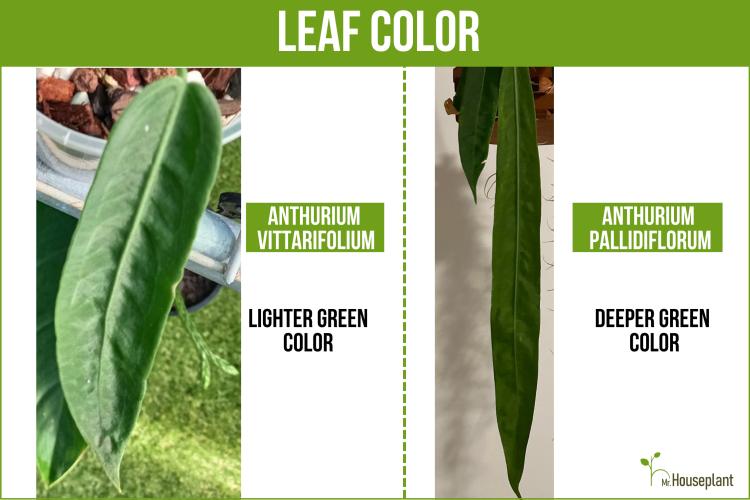
Anthurium Vittarifolium on the left and Anthurium Pallidiflorum on the right. Grow them in orchid compost, orchid soil mix or sphagnum moss, they don’t like soggy soil. (Right photo by: lmaomonents, left photo by: Cory Duffy)
Difference 4: Leaf Structure
It’s easy to differentiate plants just by touching the leaves. Anthurium Pallidiflorum has a velvety leaf texture, whereas Anthurium Vittarifolium does not. However, with young plants it won’t be so easy to make the distinction, as young Vittarifoliums appear to have a velvety texture, even though they are not velvet anthuriums. As the plants get older, it gets easier to differentiate them.
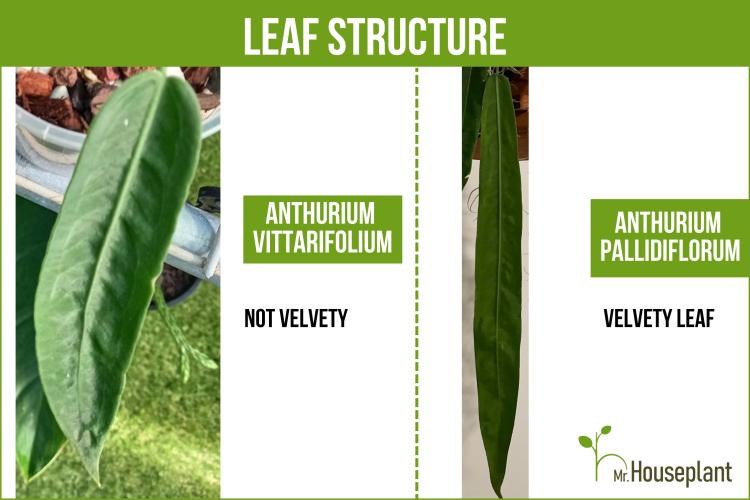
Anthurium Pallidiflorum with its velvet leaf, and Anthurium Vittarifolium with its narrow leaves, that are not velvet. (Right photo by: lmaomonents, left photo by: Cory Duffy)
Tips For Buying Vittarifolium and Pallidiflorum Online
Sometimes sellers will mark Vittarifolium and Pallidiflorum plants incorrectly, either due to lack of knowledge or to make more money (they will mark Vittarifolium as a more expensive Pallidiflorum). But with the following tips, you should be able to figure out which plant you are buying. Here are the top tips for buying Anthurium Vittarifolium and Pallidiflorum online:
- Do not accept sellers’ low-quality, dark photos. Ask for higher quality photos in bright indirect light
- Ask for close-up photos of the leaf base. Anthurium Vittarifolium leaf base is elongated, Pallidiflorum base is more round
- Ask for close-up photos, so you can inspect the midrib.
- Pallidiflorum is velvet and its shimmer is always there even as younger seedlings
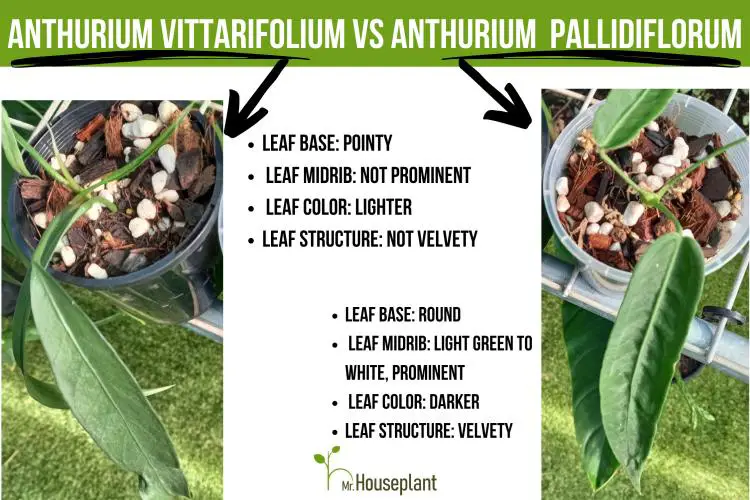
These four main differences between Vittarifolium and Pallidiflorum can help you when choosing the Anthurium you want to buy
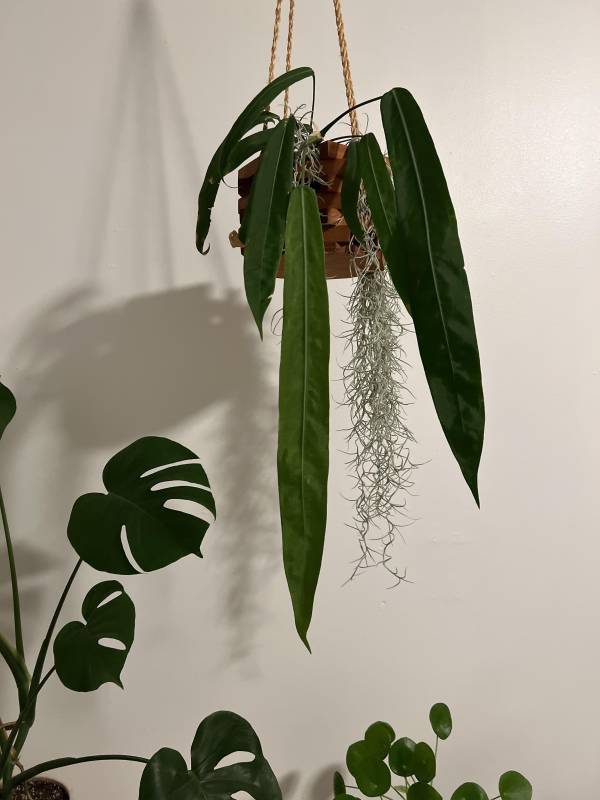
Anthurium Pallidiflorum (Photo by: lmaomonents)
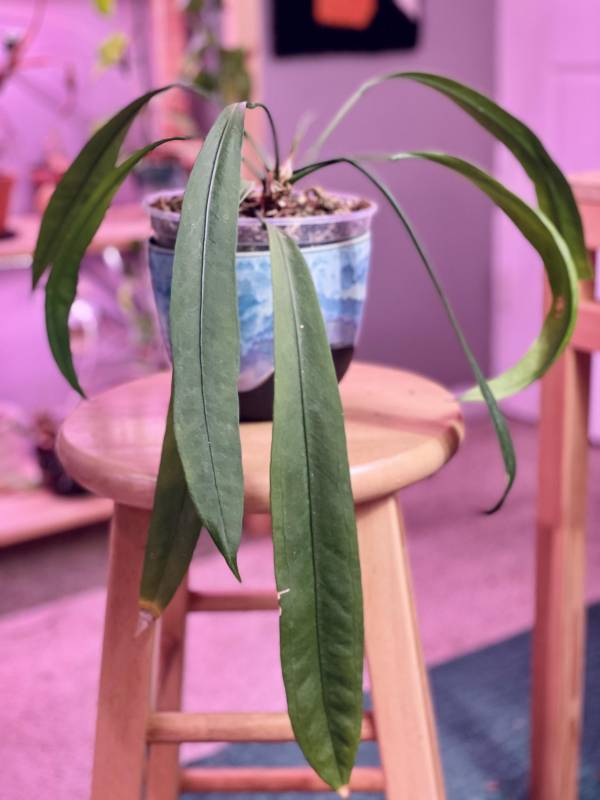
Anthurium Vittarifolium plant
Conclusion
Anthurium Vittarifolium and Anthurium Pallidiflorum are gorgeous plants that can easily be differentiated if you know what to look for. This post gave you all the information you need to differentiate them. Let me know if you have any questions in the comment section below.
If you need information on Anthurium Vittarifolium care, check out my detailed blog post on Anthurium Vittarifolium care.
Yours Truly,

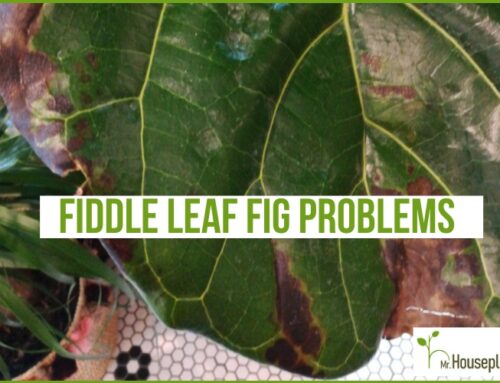
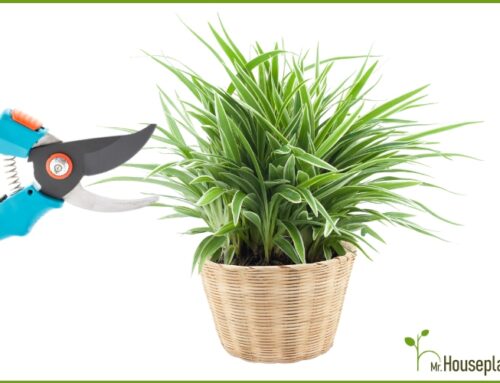
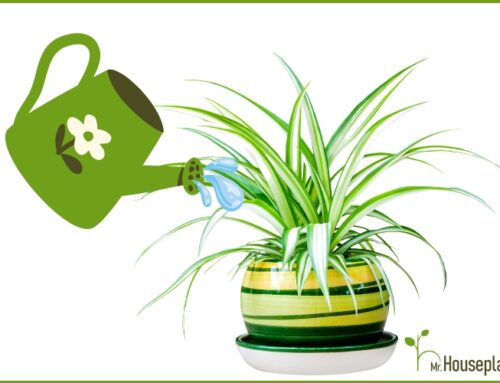


Very helpful comparisons. . . Thank you! Comments in pic of leaf shape comments (rounded/pointy) is backwards though.
Hi Laura, thank you for pointing that out. I corrected the image 🙂